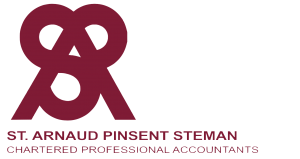Expanded Trust Rules
Introduction
The Canadian government has been discussing an update to the trust rules since the 2018 federal budget. This bill, C-32 received Royal Assent on December 15, 2022, and as a result, the first trusts affected are those with December 31, 2023 year ends. Previously bare trusts were not subject to these rules, but that has changed in 2023. We especially recommend reading through the bare trust section and going through the questionnaire in that section – there are many situations in which people do not know they have a trust arrangement but the CRA requires them to file a return!
Failure to file a required trust return carries penalties either as a percentage of tax payable by the trust, or a per diem penalty if there is no tax payable. This starts at $25/day and caps out at $2,500. Trust returns for 2023 are usually due March 31, but since this is a weekend in 2024, the true due date is April 2, 2024.
What is a Trust?
A trust is not a formal entity like an individual or a corporation, but is rather a relationship between the various parties involved. It is considered a separate taxpayer for tax purposes and has to file an annual T3 return (similar to how an individual files a T1 and a corporation files a T2). A trust has at least three separate entities as follows:
Settlor: This is the person that contributes the initial trust property and defines its intended use to the trust.
Trustee(s): The legal owner(s) of the property and the person(s) selected by the settlor to manage the settled property. The trustee is the person responsible for filing the T3 return.
Beneficiary(ies): Beneficiaries can be either income or capital, and these are the people (or other entities) that will receive the income or capital of the trust. They do not have legal or title ownership of the property.
A fourth group may exist only in some trusts, and are called Controlling Person(s). These are people that have the ability to influence the trustee.
Some people may fit more than one of these roles.

Who has to File a Trust Return?
The CRA has expanded the trust rules to include a lot of relationships that were previously not required to file. All trusts that previously had to file a return still have to file in 2023 and beyond; no changes there. New however, is that all express trusts excluding listed trusts have to file a T3 return. An express trust is defined by the CRA as “a trust created with the settlor's express intent, usually made in writing.” Do note that not all trusts have a formal trust deed so express trusts cover most trust arrangements.
Listed trusts are found in the Income Tax Act (Canada), in paragraphs 150(1.2)(a) to (o). Of note, exceptions include:
- Trusts in existence for less than three months at the end of the year
- Trusts that hold under $50,000 of assets and the trusts are composed wholly of a list of specific assets (including cash, publicly traded securities – for the full list, please click here and look under 2.3). Various parties have issued caveats when trying to rely on this exemption, as gold silver or even dividends receivable may put the trust offside.
- Trusts required by the laws of Canada or a province to hold funds (e.g. lawyer general trust account). Note that specific client accounts are not excluded.
- Registered charities
- Graduated rate estates
- RRSP, RESP, TFSA, etc.
Note that the above summary is not exhaustive, and that the income tax act link or 2.3 of this link should be consulted. The above exemptions do not apply to a lot of bare trusts, which is where most of the new 2023 filings will come in.
Bare Trusts
A bare trust is not defined in the Income Tax Act (Canada) but is an arrangement where the trustee acts as an agent for all of the beneficiaries. Generally this means that the trustee holds the legal property but has no responsibilities. There is likely a bare trust arrangement if there is a difference between legal and beneficial ownership; this may require a closer look to determine if a trust return is required. There are a multitude of non-tax reasons why a bare trust arrangement exists – we recommend consulting the attached questionnaire for more examples, and whether your specific situation may require a filing.
Most bare trusts do not have legal documents, and therefore there is no name for the trust. CRA’s recommendation is to name it after the beneficial owners in alphabetical order with “trust” at the end. For example, two beneficial owners named Mr. Smith and Mrs. Doe would be called the Mrs. Doe, Mr. Smith Trust.
The CRA has provided a relief of penalties for 2023, and it only applies to bare trusts. They say that this is due to adopting an education-first approach. Note that this does not apply to late filings made on purpose or as a result of gross negligence.

Schedule 15
All trusts have to fill out a new form, Schedule 15 – Beneficial Ownership Information of a Trust. This must be filed with a T3 return and cannot be sent in by itself. This schedule looks to identify all trustees, settlors, beneficiaries, as well as anyone who has the ability to control the trust. The CRA refers to these collectively as “reportable entities.”
So What to Do?
1) First consult the attached questionnaire to see if you need to potentially file one or multiple trust returns. You can ask your accountant to confirm if they agree with you.
2) Register for a trust number. Instructions HERE.
3) Provide the trust number and the details of the trust to your accountant for the filing of the T3 return, including the new schedule 15. To simplify things, please fill out the attached Excel document with as much information as you have.
Conclusion
This blog post is not exhaustive but it rather serves as an introduction to 2023 trust rules and how it may potentially affect you. Please refer to the resources below for further details, or contact our office at 780-448-0399 if you have any questions. We are also able to prepare the T3 return and schedule 15 on your behalf.
Resources
Trust Reportable Entities Worksheet
CRA T3 Guide: https://www.canada.ca/en/revenue-agency/services/forms-publications/publications/t4013/t3-trust-guide.html#P181_16897
Income Tax Act: Paragraphs 150(1.2)(a) to (o): https://lois-laws.justice.gc.ca/eng/acts/I-3.3/page-146.html#docCont
How to register for a trust number: https://www.canada.ca/en/revenue-agency/services/tax/trust-administrators/t3-return/application-trust-account-number-how-apply.html#wb-cont
CPA Canada’s Blog Post: https://www.cpacanada.ca/en/business-and-accounting-resources/taxation/blog/2022/october/new-rules-for-trust-reporting-are-coming
Bill C-32: https://www.parl.ca/DocumentViewer/en/44-1/bill/C-32/royal-assent

Book a complimentary accounting & tax strategy session

St. Arnaud Pinsent Steman CPA
1653-91 Street SW,
Edmonton, AB, T6X 0W8
(780) 448-0399
Business Hours
- Mon - Fri
- -
- Sat - Sun
- Closed
All Rights Reserved | St Arnaud Pinsent Steman


